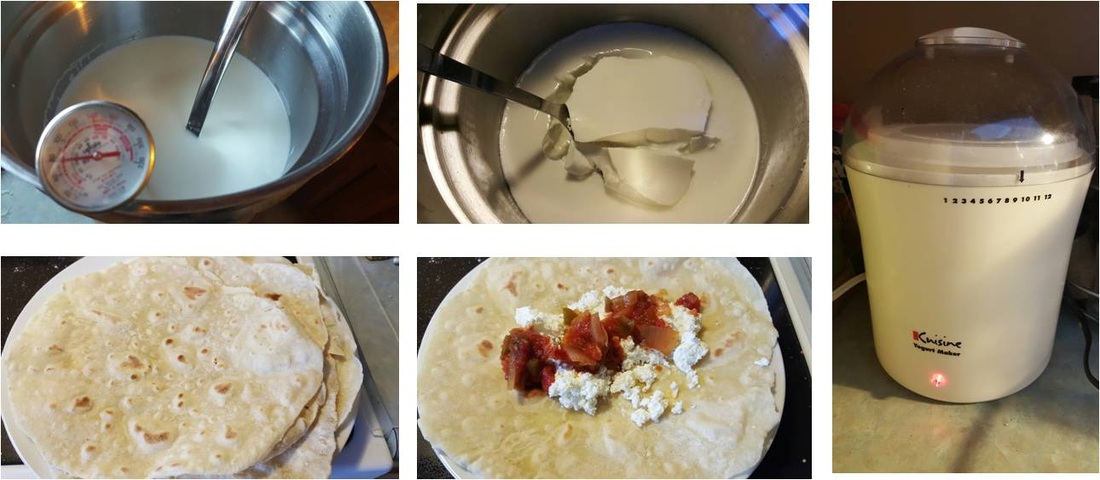Without a source of water in the barn, twice a day, sometimes more, we trekked 5-gal buckets of hot water in a sled, across the snow, head-on into driving winds all the way to the barn—100 steps in normal weather, 200 painful, nostril freezing steps during a polar vortex. The goats never greeted us without the utmost gratitude as we refreshed frozen buckets with warm, steaming water. Goats slurp, and slurp and slurp, swishp, slishp slurp, and lick their lips, grasping at the warm droplets before a few fell into the straw below. I swear they smiled at us after they felt the warmth hit their bellies and warmed them from within. The girls shivered on the milk stand as each squirt of milk froze instantly in the bucket, but they graciously accepted the grain in their feed bucket, which helped warm their rumens. With fresh bales of hay in their feeders, deep straw for bedding, warm water in their buckets, the goats weathered the cold that year with impeccable strength and resilience.
Our flock of laying chickens also tolerated the extreme cold of the polar vortex (without fire-causing heat lamps!) so long as they had freedom from drafts and access to ample food and water. Our birds survived the confines of a long, hard winter and ranged far and wide as soon as winter gave way to spring.

We learned through The Hard Winter that extreme cold adds a level of complexity to life that we had not known before embracing a farming lifestyle, especially one with livestock. We also learned that animals, and we as humans, are extremely strong and resilient, and that we can survive some of the harshest of conditions. This winter, 2016, has kindly graced us with intermittent reprieves in the weather and warmer temperatures, something unknown to us during The Hard Winter. Any sane person or family would probably have given up after such a hard year, especially when it was a first ever with livestock, but apparently this family has an affinity for adventure (or insanity!). Our goat herd and chicken flock have actually grown in size and with each passing season we have learned to better manage all the animals throughout the winter. It is still a tremendous amount of work each day, but what we receive in the way of food and companionship from our critters makes it worth every calorie we spend filling waterers and feeders throughout the long, dark days of winter.


 RSS Feed
RSS Feed

